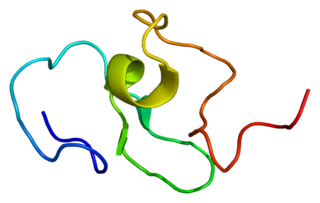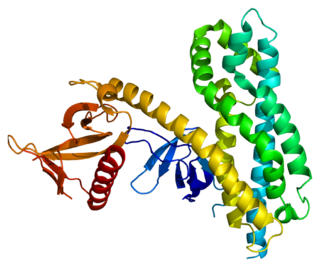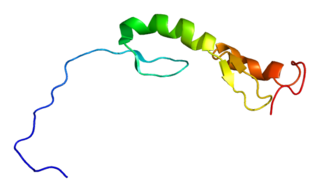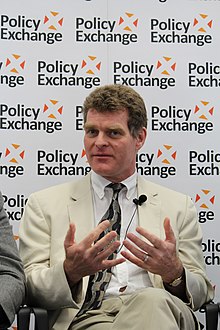
Sir Martin John EvansFLSW is an English biologist who, with Matthew Kaufman, was the first to culture mice embryonic stem cells and cultivate them in a laboratory in 1981. He is also known, along with Mario Capecchi and Oliver Smithies, for his work in the development of the knockout mouse and the related technology of gene targeting, a method of using embryonic stem cells to create specific gene modifications in mice. In 2007, the three shared the Nobel Prize in Physiology or Medicine in recognition of their discovery and contribution to the efforts to develop new treatments for illnesses in humans.

The Wellcome Sanger Institute, previously known as The Sanger Centre and Wellcome Trust Sanger Institute, is a non-profit British genomics and genetics research institute, primarily funded by the Wellcome Trust.

A disintegrin and metalloprotease 17 (ADAM17), also called TACE, is a 70-kDa enzyme that belongs to the ADAM protein family of disintegrins and metalloproteases.

Trpc4-associated protein is a protein that in humans is encoded by the TRPC4AP gene.

Spectrin beta chain, brain 1 is a protein that in humans is encoded by the SPTBN1 gene.

E3 ubiquitin-protein ligase RAD18 is an enzyme that in humans is encoded by the RAD18 gene.

Tyrosine-protein kinase, or Bromodomain adjacent to zinc finger domain, 1B (BAZ1B) is an enzyme that in humans is encoded by the BAZ1B gene.

Leucine-rich repeats and immunoglobulin-like domains protein 1 is a protein that in humans is encoded by the LRIG1 gene. It encodes a transmembrane protein that has been shown to interact with receptor tyrosine kinases of the EGFR family and with MET and RET.

Shugoshin 2(Shugoshin-2), also known as Shugoshin-like 2, is a protein which in humans is encoded by the SGO2 gene.

Putative Polycomb group protein ASXL1 is a protein that in humans is encoded by the ASXL1 gene.

Ninein-like protein is a protein that in humans is encoded by the NINL gene. It is part of the centrosome.

Rho guanine nucleotide exchange factor 4 is a protein that in humans is encoded by the ARHGEF4 gene.

TRAF-type zinc finger domain-containing protein 1 is a protein that in humans is encoded by the TRAFD1 gene.

SLX4 is a protein involved in DNA repair, where it has important roles in the final steps of homologous recombination. Mutations in the gene are associated with the disease Fanconi anemia.
Sir Michael Rudolf Stratton, is a British clinical scientist and the third director of the Wellcome Trust Sanger Institute. He currently heads the Cancer Genome Project and is a leader of the International Cancer Genome Consortium.

Ubiquinone biosynthesis protein COQ9, mitochondrial, also known as coenzyme Q9 homolog (COQ9), is a protein that in humans is encoded by the COQ9 gene.

HMG box transcription factor BBX also known as bobby sox homolog or HMG box-containing protein 2 is a protein that in humans is encoded by the BBX gene.
Glutamyl-tRNA(Gln) amidotransferase, subunit C homolog (bacterial) is a protein that in humans is encoded by the GATC gene. The gene is also known as 15E1.2 and encodes part of a Glu-tRNA(Gln) amidotransferase enzyme.
RIKEN cDNA 4932414N04 is a protein that in the house mouse is encoded by the 4932414N04Rik gene. The gene is also known as RP23-459M13.1.

Elizabeth Jane Robertson is a British developmental biologist based at the Sir William Dunn School of Pathology, University of Oxford. She is Professor of Developmental Biology at Oxford and a Wellcome Trust Principal Research Fellow. She is best known for her pioneering work in developmental genetics, showing that genetic mutations could be introduced into the mouse germ line by using genetically altered embryonic stem cells. This discovery opened up a major field of experimentation for biologists and clinicians.













